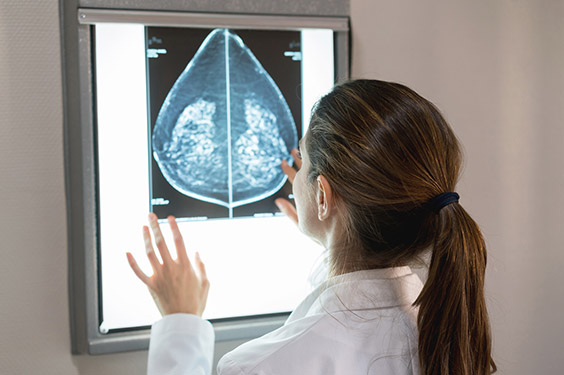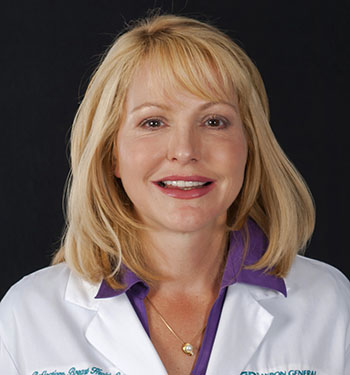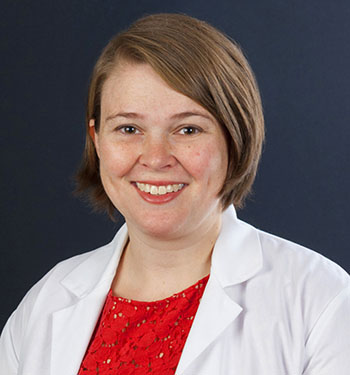Are you overdue for your mammogram?
We make it safe, easy to get your mammogram.
There are a lot of questions and what-ifs when it comes to having a mammogram, but even in these uncertain times, your health should be a priority. For your empowerment, for your peace of mind, it’s important to schedule your mammogram.
Is it safe to come to Cleveland Clinic Akron General?
Cleveland Clinic Akron General has always been committed to delivering safe care. Now, in response to COVID-19, we’re taking unprecedented action to keep patients and caregivers safe in our facilities while fulfilling our mission to be the best place for care, whenever you need it.
“Many patients have been putting off important health screenings due to concerns over coronavirus. If you missed screenings or check-ups over the last few months, I encourage you to catch up with those to head off potential health concerns down the road,” says Mary Murray, MD, a breast surgeon who treats patients in the Reflections Breast Health Center at Akron General. “We have all the necessary measures in place to safely provide routine care, which is critical for your long-term health.”

When is it time to get a mammogram?
No matter your age, medical history or diagnosis, Akron General offers personalized breast care from screening to treatment.
Recommendations vary, so at Akron General, we’ve reviewed current guidelines (some of which differ from one another) and have developed consensus guidelines for our patients. Our recommendation is that a woman should have the first option to start screening mammography beginning at age 40. From the ages of 45-55, we recommend yearly screening for all women. Then, at the age of 55, each woman should have a conversation with her doctor about whether she should continue every year or go to an every-two-years screening schedule.
“Because every situation is different, Akron General encourages shared decision-making between women and their physicians,” says Dr. Murray.
Regardless of your age, if you’re experiencing breast symptoms such as pain or nipple discharge or have felt a lump, a clinical breast examination by a healthcare provider should be scheduled as soon as possible. In these instance, diagnostic breast imaging — above and beyond screening mammography — may be recommended.

Which screening is best for you?
“The “gold standard” for diagnosing breast cancer is mammography, an exam that uses X-rays to image the breast tissue and detect different densities” says Dr. Murray. “You will either learn that you have no suspicious findings, or that additional diagnostic tests are necessary to further evaluate a possible abnormality seen on the screening exam.”
Screening options include:
- Screening mammograms which compress the breast in two ways, from top to bottom and obliquely side to side. In some cases, overlapping tissue can cause the resulting image to look like cancer, or obscure small breast cancers. While most abnormalities in a mammogram are not breast cancer, they can lead to the need for further testing.
- 3D mammography, also called digital breast tomosynthesis, is similar to digital screening mammography in that the breast is compressed. However, with this advanced technology, X-rays pass through the breast at many different angles, creating a series of images. These images can reduce the degree of overlap and allow a radiologist to detect small breast cancers with fewer call-backs.
- Breast magnetic resonance imaging (MRI) can provide further detection of lesions, though not all lesions are cancerous. To avoid unnecessary biopsies, screening MRI is generally reserved for high-risk cases in combination with screening mammography.
- Breast ultrasound allows radiologists to distinguish between solid and cystic breast masses. While very sensitive, ultrasound is not always very specific, so is used only in certain situations and as an adjunct to mammography. In young women, ultrasound is the usual breast imaging of choice, rather than mammography.
The combined sensitivity and specificity of screening mammography and 3D mammography make them the best screening tools for breast cancer detection.
Many patients have been putting off important health screenings due to concerns over coronavirus. If you missed screenings or check-ups over the last few months, I encourage you to catch up with those to head off potential health concerns down the road.
Mary Murray, MD
Lorem ipsum dolor sit amet, consectetur adipiscing elit
Lorem ipsum dolor sit amet, consectetur adipiscing elit, sed do eiusmod tempor incididunt ut labore.
Risus commodo viverra maecenas accumsan lacus vel facilisis. Lorem ipsum dolor sit amet, consectetur adipiscing elit, sed do eiusmod tempor incididunt ut labore et dolore magna aliqua.
What if it is breast cancer?
If cancer is found, Akron General will assemble a team for your unique needs. The team might include radiologists, surgeons, medical oncologists, radiation oncologists, plastics surgeons, nurses and social workers. Treatment plans, which typically begin a few weeks after diagnosis, aim to eliminate breast cancer and reduce the chance of it returning or traveling to a location outside the breast.
“Because surgery is often the first line of treatment for breast disease, our surgical team works closely with other specialists to focus on emerging techniques and the collaborative care necessary to deliver them. With this approach, we are able to spare breast tissue, reduce damage to healthy structures and shorten the course of treatment,” says Kathryn Leininger, MD, a hematologist and medical oncologist who treats patients at Akron General‘s McDowell Cancer Center. “Breast cancer surgery is often combined with chemotherapy, radiation therapy, hormone therapy, or varying combinations of these for the best possible outcome.”
Roy Miler, MD
Lorem ipsum dolor sit amet, consectetur adipiscing elit, sed do eiusmod tempor incididunt ut labore e.
Lorem ipsum dolor sit amet, consectetur adipiscing elit, sed do eiusmod tempor incididunt ut labore et
Dolore magna aliqua. Quis ipsum suspendisse ultrices gravida. Risus commodo viverra maecenas accumsan lacus vel facilisis. Lorem ipsum dolor sit amet, consectetur adipiscing elit.
For empowerment. For peace of mind. For every care in the world. Walk in or schedule your mammogram today.
How to schedule a mammogram?
Click here to view all mammography locations and hours across Northeast Ohio, including those offering walk-in screening mammograms for women with no breast symptoms.
Or call Akron appointments 234.900.0569.




